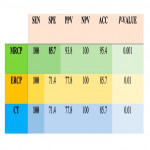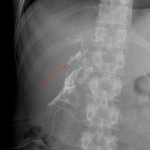Keywords:
Abdomen, CT, Fluoroscopy, MR-Cholangiography, Cholangiography, Complications, Diagnostic procedure, Acute
Authors:
N. M. Popova, I. Miklaseviča, S. Lapsa, A. Ozolins, A. Buss, M. Radzina
DOI:
10.26044/ecr2022/C-22213
Purpose
Laparoscopic cholecystectomy is one of the most common surgery types globally, with the potential for iatrogenic biliary tract injuries (IBI). IBI is a serious and potentially life-threatening complication after cholecystectomy, with incidence up to 0.5% for conventional cholecystectomy up to 1.2% for laparoscopic cholecystectomy, which significantly affects the quality of life, and overall survival, and causes frequent medical and legal obligations[1].
Imaging is an important instrument in the detection of these complications and a prerequisite for further management decisions. The most common modalities include endoscopic retrograde cholangiopancreatography (ERCP), magnetic resonance cholangiopancreatography (MRCP), computed tomography (CT), percutaneous transhepatic cholangiogram (PTHC), and ultrasound (US).










